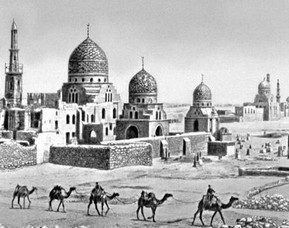
Arabic folklore is a mirror of the East
 The cultural heritage of the Arab world, one of the wisest and most powerful civilizations, folklore, reflects the essence of the existence of the Ancient East, its traditions, foundations and is largely determined by the Muslim worldview of the Arabs.
The cultural heritage of the Arab world, one of the wisest and most powerful civilizations, folklore, reflects the essence of the existence of the Ancient East, its traditions, foundations and is largely determined by the Muslim worldview of the Arabs.
Rise through conquest
The first monument of Arab folklore dates back to the 2nd millennium BC. in the form of an inscription that states that Assyrian slaves bewitched their overseers by singing. In ancient times, the Arabian Peninsula was the center of development of Arab culture, the origins of which come from the hinterland of Northern Arabia. The conquest of a number of highly developed powers by the Arabs led to the flourishing of culture, which, however, subsequently developed under the influence of border civilizations.
Characteristics
As for traditional instrumental Arabic music, it is not widespread, so information about it is very limited. Here, instrumental music is practically not used as an independent form of creativity, but is an integral element in the performance of songs and, of course, oriental dances.
In this case, a big role is given to drums, which reflect the bright emotional coloring of Arabic music. The rest of the musical instruments were presented in a more meager assortment and were a primitive prototype of modern ones.
Even today it is difficult to find an Arab home that does not have some kind of percussion instrument, which is made from widely available materials such as leather, clay, etc. Therefore, melodies of simple motifs coming from the windows of houses, accompanied by rhythmic tapping, are quite a common occurrence.
Maqams as a reflection of mentality
Maqams (Arabic – makam) are one of the most striking elements of Arab folklore. The sound structure of maqams is quite unusual, so they are difficult to perceive for people who are not familiar with the specifics of the cultural and historical environment of a given nation. In addition, the fundamentals of the musical theory of the West and the East are fundamentally different, so a person who grew up in the bosom of European music can be misled by Eastern motifs. Maqams, like any folklore, were initially kept only in oral form. And the first attempts to record them came only in the 19th century.
Ancient Arabic folklore is characterized by a fusion of music and poetry. Widely known were professional poet-singers – shairs, whose songs, as people believed, had a magical influence. Each village had its own shair, who performed his songs from time to time. Their subject matter was arbitrary. Among them were songs of revenge, funeral songs, songs of praise, songs for horsemen and cattle drivers, mourning songs, etc.
Arab folklore is the assimilation of the embryos of the original culture of the Arabs and the developed art of the peoples they conquered, and this mixture of national colors is transformed into magnificent creativity, reflecting the incredibly specific, unusual character of African and Asian civilization.




